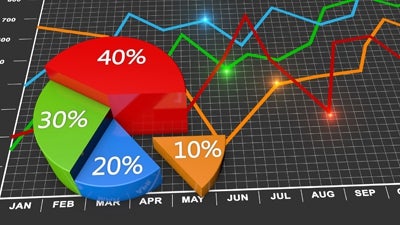3 Signs You’re Focusing on the Wrong Performance Metrics
By: Asha Saxena

Did you browse its arsenal of comedies? Did you shamefully indulge in reality TV shows or a series of fast-food documentaries? Whatever you clicked, searched, and watched, Netflix knew all about it through its ability to profile customers.
And Netflix knows exactly how to use data to understand its customers’ behavior.
In other words, Netflix used performance metrics, and they’re essential for any company to succeed. Performance metrics should always be moving your company toward its Big, Hairy, Audacious Goal via a system built to collect data in the areas that will grow your business.
Big companies like Target and Amazon are particularly adept at the art of performance metrics. But you don’t have to run a massive retail corporation to intelligently track customer behavior and your team’s performance. You just have to know which performance metrics to focus on and how to analyze them.
Otherwise, your performance metrics can actually work against you.
Signs of a Bad System
Recently, I talked with a client about his company’s performance metrics. Excited, he reached for a 4-inch binder and explained that he’d soon have another one ready for the month that just ended.
My jaw hit the floor as I realized that the binder held metrics for only one month.
This perfectly highlights how performance metrics are like laws: You have to get rid of useless ones before you can add fresh ones. This raises an obvious question: What are the right metrics?
Your metrics should represent the needs of both your customers and your business, focusing on the end results you want to achieve. Here are a few signs that indicate that your data collection is unfocused:
- High-level complexity: Real-time data is the best information for keeping customers happy and ensuring solid performance. If there’s significant lag time between production and feedback numbers, you need to find a way to get that information faster.
- Unclear strategy: Nothing hampers performance like chaotic data collection. Your process for examining measurements should be simple, straightforward, and accessible.
- Disjointed data sources: If your metrics require multiple unintegrated systems to read, then they’re unhelpful. When you’re pulling information from different data streams, it’s hard to see where you actually stand. A streamlined, integrated system makes gathering and processing this vital data much easier.
Taking a long, hard look at the metrics you’re focusing on may seem daunting. But trimming the fat from your business uncovers what actually needs to be accomplished to reach your performance goals. And once you have a streamlined way of measuring performance metrics, you can take advantage of your newly efficient system.
Here are three smart ways to set (and use) performance metrics:
1. Define and Focus on Your Goals
Performance metrics give you an idea of what’s happening in every aspect of your company. But just because you can track everything doesn’t mean you should. Performance metrics should make life easier, not inundate you with irrelevant data.
2. Clearly Communicate
High performance goals need to be specific. Be clear about where you want to take the company. Remind yourself and your team of those goals on a regular basis, and use performance metrics to stay on track. When things seem off-kilter, it’s easier to correct your course when you have data to show you the way.
3. Measure Your Goals
Following the right metrics gives you insight into what your team is up to and where they could improve. The right metrics are important, but so is accurate measurement. Make sure you’re measuring at regular intervals, and focus on clarity, precision, and efficiency. Keeping your data clear and simple is critical.
Performance metrics are only useful when they’re aligned with your big-picture goals. Your focus may pivot or evolve based on what your data is telling you, and your data can help you recognize the areas you need to improve upon.
Keeping your eye on your data will help you perform at a higher level. Establish a system that works for your team and helps you achieve the right results.
What metrics help your team’s performance?
3557 Views














